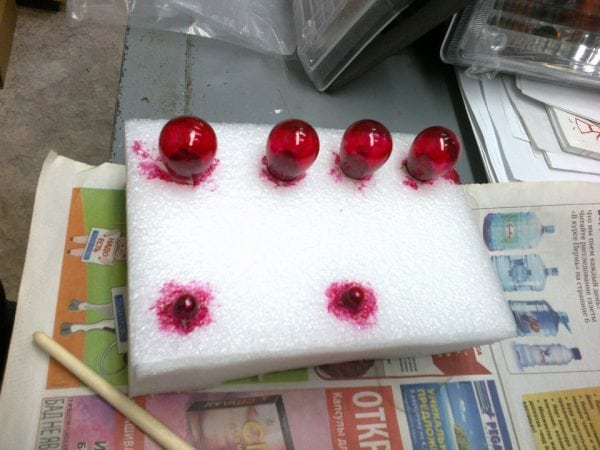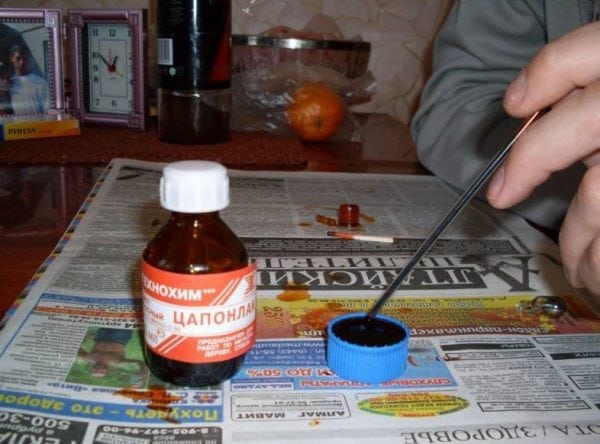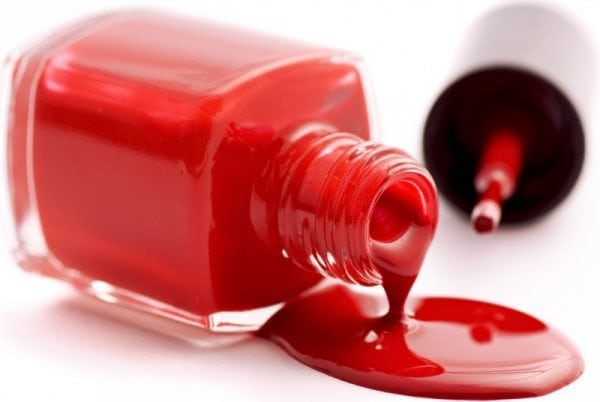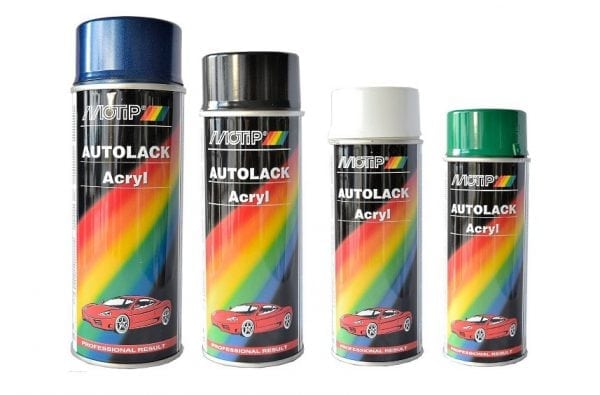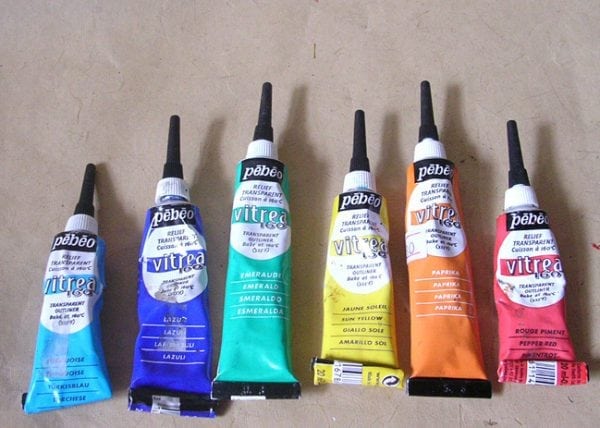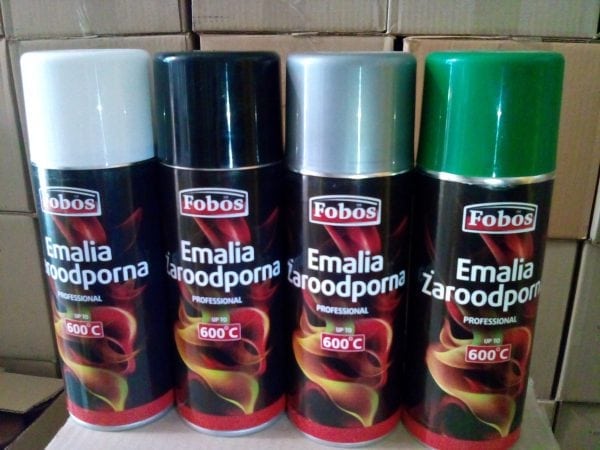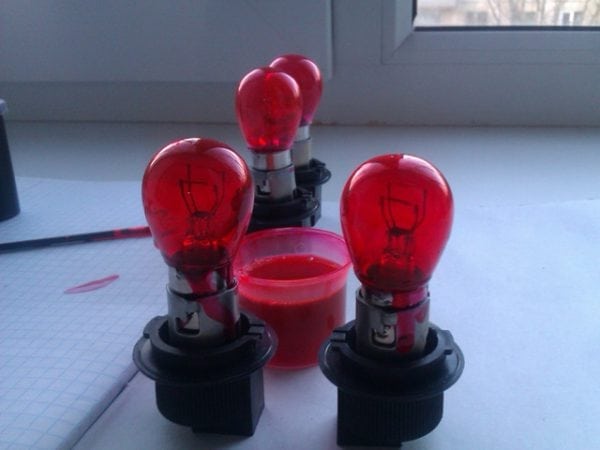The need to paint a lamp is usually dictated by decorative tasks. Someone wants to create a color music system, someone needs a multi-colored illumination of the dashboard or room.
- Potential problems
- Solutions
- Ballpoint Paste
- Lacquer
- PVA
- Car enamel
- Stained glass paints
- Zaponlak
- Organosilicon
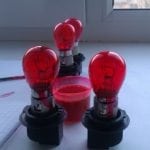
Colored lamps are sold in household goods stores, but the cost of such products is several times higher than ordinary light bulbs.
Most often, the consumer decides to purchase a standard incandescent lamp and paint it in the desired color. Thus, the question arises: how to paint the light bulb? This will be discussed in the article.
to contents ↑Potential problems
The main problem that can be encountered after painting the lamp is the high temperature. A 25-watt incandescent lamp or fluorescent device is heated to 100 degrees. The surface of a 275-watt halogen bulb burns to 250 degrees. The LED device heats up fairly moderately - up to 35 - 50 degrees Celsius.
Halogen appliances must not be painted. As for lamps of other types, in most cases, the paintwork does not withstand temperature and is destroyed. After loss of transparency, the lamp will become unevenly heated, which dramatically reduces its life.
to contents ↑Solutions
For painting the lamp, ordinary paint will not work. And yet there are a number of solutions that will help solve the problem.
Ballpoint Paste
To make the bulb, for example, blue, you can use a regular paste from a ballpoint pen.
You can do this as follows:
- Remove the tip containing the ball from the rod.
- Blow out the rod. This will help to remove the paste on a paper sheet.
- Holding the lamp by the base, rub the flask with paste.
In one of the Soviet technical journals, a method was proposed: dilute the paste in acetone, and apply the resulting liquid to the flask with a brush. The option is good in that it allows you to control the saturation of the paint. However, it should be borne in mind that liquid paint is difficult to apply on a smooth glass surface.
to contents ↑Advice! Instead of acetone, other types of solvents (cologne or ethyl alcohol) can also be used.
Lacquer
The light bulb can be painted using regular quick-drying nail polish. However, it should be remembered that the varnish is able to withstand temperatures up to 200 degrees, and then begins to flow.
Only economy lamps or incandescent lamps of small power are lacquered. The varnish is applied with a brush attached to the tube. A cotton swab will do.
to contents ↑Advice! Colorless varnish creates a layer with good adhesion. Already from above apply paste from a ballpoint pen.
PVA
PVA glue is applied to moderately heated bulbs. The principle is the same as described above when it came to colorless varnish - creating a layer on which the dye will lie well.
After the glue has dried, the surface is painted with a paste from a ballpoint pen, ink from an inkjet printer, or any water-soluble pigment.
Note! After drying, the white PVA glue becomes transparent.
Car enamel
Car enamel is also suitable for painting light bulbs. Enamels are packaged in aerosol cans. Like varnish, enamel retains its performance at temperatures up to 200 degrees Celsius.
Enamel is applied from a distance of 30 to 50 centimeters. The paint layer should not be too thick, since in this case the bulb will lose transparency.
to contents ↑Stained glass paints
For painting bulbs use stained glass paints. In order to make the right decision about which paints can be used to paint a light bulb, and which cannot, you should know that only water-soluble dyes are suitable for firing.
Such paints do not ignite when heated. An increase in temperature only strengthens the coating. The only significant drawback of stained glass paints is the high cost. A small tube (50 grams) costs an average of 200 - 250 rubles.
to contents ↑Zaponlak
To give a light bulb a color, zaponlak is suitable. This substance is sold in radio stores. Zaponlak was originally designed to protect tracks and soldering from short circuits.
The composition of zaponlak has the following components:
- nitrocellulose;
- organic solvent;
- dye to color parts (optional).
Zaponlak has a certain thermal stability, since the temperature of parts during their operation reaches 150 degrees. The minus of zaponlak is limited when choosing a color.
Varnish does not have a dye in its composition, and therefore color will have to be created due to other components. For example, to get a red lamp, you need a transparent zaponlak and red paste from a ballpoint pen. The procedure for staining with paste is the same as described above.
to contents ↑Note! With the help of zaponlak, you can paint the lamp not only in red, but also in green. Zelenka to give the bulb an appropriate color will not work, since this medication practically does not linger on the glass.
Organosilicon
Organosilicon-based paints and varnishes are used to color coat coatings that operate at elevated temperatures.
Organosilicon paints are the most hardy in relation to heating and can withstand up to 600 degrees Celsius. Due to this, the organosilicon retains performance on the hottest bulbs.
To obtain a transparent coating, the composition must be diluted. The desired solvent is always indicated on the container. For example, for the Russian brand KO-813, solvent No. 646 is needed. Solvent or xylene is suitable.
In the home workshop, the choice is small. As a rule, it all comes down to creating a base on which the dye is then applied.
A more expensive option is stained glass or organosilicon paint, however, the quality of the coating will be higher.

